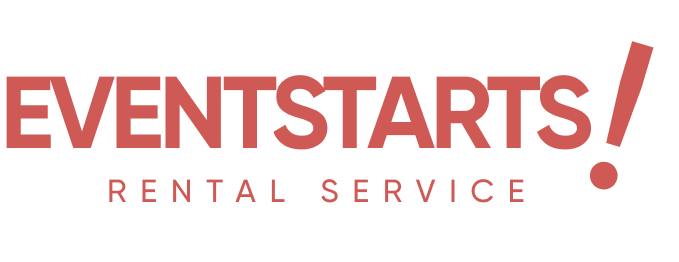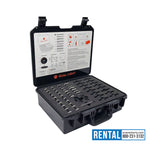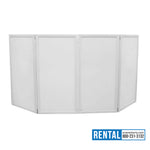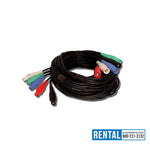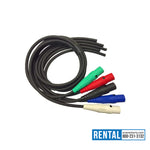You have no items in your shopping cart.
Stage Setup Mistakes to Avoid: Lessons from the Pros
When it comes to live events, few things are as crucial — and as visible — as the stage setup. Whenever a corporate conference, a music festival, or a theatrical performance takes place, the stage stands at the very center of attention. Nevertheless, a great many organizers—especially those with limited technical knowledge—fail to account for critical details during setup, which invariably leads to costly, dangerous, or embarrassing outcomes.
In this blog, we’ll explore the most common mistakes professionals encounter during stage setup and offer practical advice on how to avoid them. These observations originate straight from veteran technicians and production teams who have experienced it all.
1. Picking an improper stage height.
One of the most common errors is either misjudging the correct stage height or, alternatively, gues
Too Low:
More seats in the back render the performers invisible.
Stage lights and effects can be obscured by spectators or by positioned equipment.
Live-stream and recorded video footage endure suboptimal camera angles.
Too High:
Bridges the performers and the audience with a disconnect.
Ups the risk factor whenever stairs or railing are absent.
Hard for seniors and disabled guests to reach.
Pro Tip: Take into account the venue’s scale, the audience configuration, and the specific performance format. If the audience comprises fewer than 200 people, 60–80 cm in height ought to suffice. For events with more than 200 people or outdoor performances, 1.2–1.5 meters delivers sufficient visibility while still leaving the scene looking balanced.
2. Whether cables are snaking on the floor, leaning against the stage, or otherwise unmanageable, the worst impression is certain to emerge.
An array of unorganized, unsecured cables clearly shouts “amateur.”
Inept cable management may result in:
Trip risks for both crew members and performers.
Damage to equipment caused by cables that are tugged or squashed
Protracted delays during setup and teardown.
Sound interference or equipment drop-outs during the show
Doing It Right
In high-traffic zones, lay out cable ramps.
Category cables individually: power lines, audio wires, and data cables ought to be kept distinct.
Label each cable and apply color-coded tape to each one.
Secure unruly lines using velcro ties or gaffer tape; avoid at all costs the use of duct tape.
When convenient, lift all cables and lines from the floor using truss clips or routing them beneath the stage.
3. Overlooking maximum load capacities
Every stage, truss, and rigging system is assigned a particular load rating — disregarding that limit can have devastating consequences.
Examples of overloading mistakes:
Introducing excessive moving heads or speakers onto a single truss
Installing heavy LED walls and shadows without any load-spreading plates.
Permitting unapproved stage elements (such as water barrels or furniture) without conducting weight testing
Always check:
Confirm staging deck and riser load ratings.
Validate all rigging certifications for any gear hung from the rig.
Ensuring that weight is evenly disseminated over the platform.
Protip: Collaborate with certified stage engineers or rental providers that supply comprehensive load documentation and safety guidance.
4. Poorly oriented stage
You’ve spent on a stage, lighting, and sound system; but if that stage is oriented in the wrong direction, it makes no difference.
Common issues:
Oriented so the sun sits behind it, so the audience is left blinded.
A backdrop that interrupts the visibility of lights or LED screens.
Audio spilling into adjacent property areas
Wind emerging from the wrong direction so as to strike microphones or instruments.
Make the Fix Before You Build:
before the day, scout the venue and examine its natural lighting, wind patterns, and seating configuration.
Download apps or run software that replicates how the sun shifts and simulates weather conditions.
Set the stage on a sharper angle to improve visibility, acoustics, and comfort.
5. Cutting Back on Lighting Design
Several event planners regard lighting as nothing more than a couple of spotlights aimed at the performers. In fact, lighting determines the atmosphere and governs visibility, safety, and enjoyment.
Common mistakes:
Depending exclusively on background daylight
Lacking standby lights in the event of power outages and cloudy weather conditions
Insufficient front lighting that casts the performers into shadow.
Leaving stairs, backstage spots, and audience walkways unlit
Practical Tip: Follow a layered lighting approach:
Front lights for clear facial definition
Back lighting for separation
Heavy use of side lights to create dimension.
Employ effects lighting to change the atmosphere.
Every lighting design should take into account the mood you seek to create for the audience as well as the requirements of performers.
6. Insufficient Power Planning
Power concerns typically fall by the wayside until an outage utterly disrupts the performance.
Things to steer clear of:
Plugging in pro-grade equipment into household power
Beyond the capacity of the existing circuits via high-wattage equipment
Fed from a single power source, audio and lighting may result in hums or interference.
Failing to ground outdoor rigging correctly
Checklist:
Determine the combined power draw of every piece of equipment.
Allocate distinctive power lines to audio, lighting, and video.
When necessary, hire industrial generators—be sure it comes with a ready fuel reserve.
Provide sensitive gear with UPS units or voltage regulators.
7. Picking the Wrong Equipment
It’s budget-friendly to rent gear, so long as it’s the perfect fit for the job. Far too often, event organizers order obsolete, mismatched, or over-sized gear because they lack expertise or act without enough planning.
Avoidable rental pitfalls:
Selecting stage decks that lack safe interlocks
Opting for rental LED walls unapproved for outdoor use
selecting speakers that lack the power to suit the audience size
Omitting vital accessories (mounts, stands, clamps)
Tips: Rent only from organizations that supply consultation, transportation, and on-site support. These pros can steer you to the right gear for the task—and help prevent spending more than necessary.
8. Planning without a Setup Run-Through
You wouldn't skip a dress rehearsal before a performance, so don’t skip rehearsing your stage setup. Numerous events run into:
Setbacks caused by unversed operators
Crews do hesitate when laying cables and positioning lights.
Communication breakdown between the lighting crew and sound crew
Surprise glare, shadowing, or feedback
Solution:
Draw up a setup schedule that accounts for buffer time.
Run a dry run the day before—or first thing in the morning of—the event.
Give everyone on the crew a unified tech walkthrough.
Verify every system while operating in real-time conditions (lighting, sound, visuals)
9. Failing to comply with Safety Regulations
Even the most impressive stage setup means nothing if it’s unsafe.
Frequent safety infractions:
The elevated platforms offer no guardrails or toe boards.
Trusses positioned without adequate securing.
Exposed loose wiring situated in high-traffic areas
Non–certified rigging practices
Avoid the risk:
Adhere to local event codes and obtain the necessary permits.
Employ OSHA-approved gear, and implement sufficient fall protection when necessary.
Every overhead piece of equipment should be fastened securely with safety cables.
Carry out a final safety survey just prior to showtime.
10. Neglecting Accessibility
In contemporary times, accessibility is no mere pleasant added feature—it is a binding legal and moral obligation.
Mistakes:
Stages without ramp access or accessible staircases.
Narrow backstage passages that leave wheelchair users behind
Absent front-row accommodations for guests with limited mobility
Solve it by using:
Collapsible ramps compliant with the ADA
Larger pathways coupled with barrier-free zones
Well-defined signage and the presence of assistance personnel
Conclusion
A perfect stage setup is invisible — not because it’s underwhelming, but because it runs so smoothly that no one notices. Achieving it takes meticulous planning, the proper partners, and a meticulous eye for detail.
By avoiding the most common height, orientation, cable-management, safety, and equipment-rental pitfalls, you’ll simultaneously enhance the audience’s experience and conserve your time, money, and headaches.
Looking for assistance to produce a perfect setup? Visit EventStarts.com — we offer expert stage setup services, equipment rental, and full production support for events of every size. Let us join forces to create something extraordinary.
